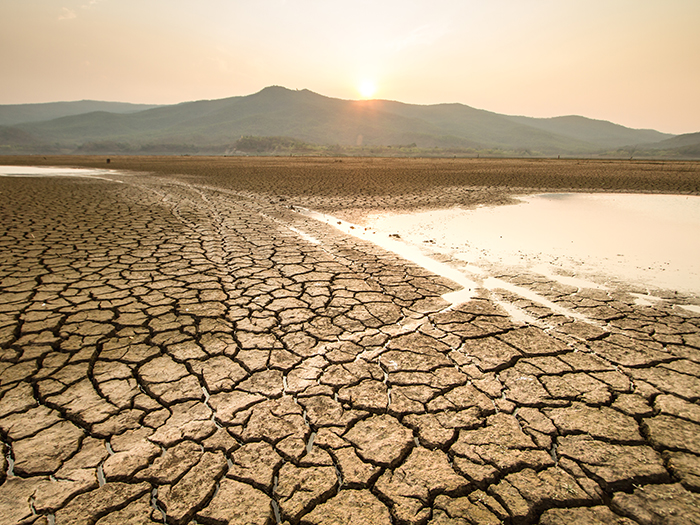Natural Disaster Risks Reshape Insurance Landscape, Sustainability

The insurance industry is being forced to reassess its risk models and coverage strategies as secondary perils like floods, fires, and severe storms increasingly dominate global insured losses, intensifying the financial pressure on insurers, reinsurers, and consumers, according to an in-depth report by S&P Global Market Intelligence.
In recent years, insured losses from natural catastrophes have consistently topped $100 billion annually, with 2024 on track to surpass this threshold once again. This trend is driven by a combination of factors, including growing populations in catastrophe-prone areas and rising insured property values due to inflation.
Notably, secondary perils such as floods, fires, and severe convective storms now account for a larger share of global insured catastrophe losses compared to traditional peak perils like tropical cyclones and earthquakes. This shift is forcing insurers to reevaluate their risk assessment strategies and relationships with both reinsurers and policyholders.
Adding to the industry’s challenges is the increasing geographic uncertainty of severe weather events. Regions previously considered safe from certain types of catastrophes are now experiencing unexpected impacts. A striking example of this phenomenon occurred when Hurricane Helene devastated the Appalachian mountains in North Carolina, an area traditionally thought to be protected from such storms.
The hurricane’s impact was catastrophic, resulting in over 100 deaths and more than $40 billion in economic damage. This event underscores the need for insurers to reassess their risk models and coverage strategies in light of changing weather patterns.
“The insurance industry has often acted as an early warning system for individuals and industries looking to understand and mitigate future risk. With climate change expected to increase the severity and frequency of natural catastrophes, understanding this altered risk environment is paramount. Insurers have been beating the drum on a variety of climate change risks for many years so their current focus on extreme weather should be a cross-industry concern,” stated Raymond Barrett, lead author of the report at S&P Global Market Intelligence.
Financial Impacts on Insurers and Reinsurers
The mounting costs of natural catastrophes have taken a significant toll on the insurance industry’s financial performance. The global reinsurance sector, in particular, failed to earn its cost of capital for five out of six years between 2017 and 2022, largely due to losses from secondary perils, the report noted.
In response, reinsurers implemented corrective measures at January 1, 2023 renewals. These actions included increasing property-catastrophe coverage prices and raising payout thresholds, known as attachment points. The goal was to shift more of the burden for secondary perils onto primary insurers while allowing reinsurers to focus on covering the largest events.
Impact on Consumers, Protection Gaps
As primary insurers face higher reinsurance costs and retain more risk on their books, the financial pressure is inevitably passed on to consumers, S&P pointed out. This has led to significant increases in insurance premiums, particularly in the U.S. homeowners insurance market. The trend shows little sign of abating, with rates continuing to rise as insurers adapt to the new risk landscape.
The situation is further complicated by the existence of protection gaps, particularly in flood insurance coverage. For instance, in the aftermath of Hurricane Helene in North Carolina, it was estimated that only 7.5% of homes with Federal Emergency Management Agency-verified flood damage had coverage. This lack of adequate insurance protection leaves many homeowners vulnerable to significant financial losses in the face of increasingly unpredictable natural disasters.
The consequences of this protection gap are severe, S&P warned. North Carolina’s Office of State Budget and Management estimates that the National Flood Insurance Program (NFIP) and private flood insurance will cover a mere $270 million in flood damage from Helene. More alarmingly, only 7.5% of homes with FEMA-verified flood damage from Helene had coverage, while the figure for commercial structures stands at about 15%, according to the report.
Political Uncertainty Around Government-Backed Insurance
Adding to the industry’s challenges is the political uncertainty surrounding government-backed insurance programs. The incoming Donald Trump administration has pledged to reduce the size of the federal government, potentially impacting the NFIP.
The Heritage Foundation’s Project 2025 initiative, described as a potential policy blueprint for a second Trump administration, has proposed winding down the NFIP and replacing it with private insurance. This potential shift could dramatically alter the landscape of flood insurance in the United States.
Emerging Risks for Expanding Industries
As industries expand their geographic footprint, understanding the evolving physical climate risk landscape becomes crucial. The growth of the datacenter sector in Texas provides an illustrative case study. Attracted by inexpensive power, cheaper land, and favorable tax conditions, datacenter operators have built approximately 7.1 gigawatts of capacity across the state, with another 7 GW expected by the end of 2029, the report stated.
However, an S&P Global Market Intelligence analysis projects significant climate-related risks for Texas’ major datacenter clusters by 2070. While tropical cyclones, pluvial floods, wildfires, and extreme cold are not expected to pose significant threats, drought emerges as a critical concern. Water stress risks are particularly pronounced in the Amarillo, El Paso, and Dallas-Fort Worth-Arlington metro areas, potentially impacting the cooling systems essential for datacenter operations.
The Insurance Industry as an Early Warning System
Historically, the insurance industry has played a crucial role in identifying and quantifying emerging risks long before they become widespread concerns. From the dangers of asbestos to the growing threat of cybersecurity breaches, insurers have often been at the forefront of risk assessment and mitigation strategies.
In recent years, insurers have been particularly vocal about the increasing frequency and severity of extreme weather events. Desertification, forest fires, and storm surges are just a few of the climate-related perils that have caught the attention of insurance professionals. Their focus on these issues serves as a wake-up call for businesses across industries, highlighting the need for comprehensive risk management strategies in the face of a changing climate.
Obtain the full report here. &










